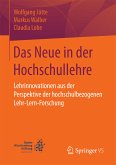This book uses case studies of academic units from Australian public universities to explore the reasons why those units respond in different ways to similar contemporary challenges. The 'academic units'-departments, schools and faculties-in the world's public universities may be their own administrative fiefdoms, but the wider environment within which they operate is both complex and dynamic. In fact, today's academic landscape is barely recognizable from what it was like two decades ago. The globalization of higher education markets for students, faculty and research funding has expanded the challenges and opportunities for academic units beyond the boundaries of nation states. However, academic units must also deal with the diverse needs and expectations of national and local stakeholders, as well as operate within government regulatory and policy frameworks. In addition, they are required to adhere to policy and operational directives from institutional executives and consider the often-competing needs and expectations of other stakeholders such as faculty, students, employers, funding bodies and professional associations. As public funding slowly evaporates some university faculties have embraced the imperative to be more business-oriented. Others have shrunk from congress with Mammon. The milieu of tertiary education is having to adapt to fresh trends in this domain, such as the advocacy of marketization, entrepreneurialism and corporatization, the three pillars of so-called 'new public management'. With its case studies from different academic disciplines and types of university, this book asks some key questions: Why do some units adapt to environmental challenges and others resist change? How and why do academic units adopt different modes and processes of adaptation or resistance? Along with its new conceptual framework for the wider context, the text makes an important contribution to scholarship on leading and managing change inuniversities, while at the same time offering those in academic leadership positions relevant advice and practical suggestions to guide their units through these complex challenges. Where other academic studies have examined the university as an institution in its entirety, this focused study compares the decision-making on a lower rung of the administrative ladder.
Dieser Download kann aus rechtlichen Gründen nur mit Rechnungsadresse in A, B, BG, CY, CZ, D, DK, EW, E, FIN, F, GR, HR, H, IRL, I, LT, L, LR, M, NL, PL, P, R, S, SLO, SK ausgeliefert werden.









